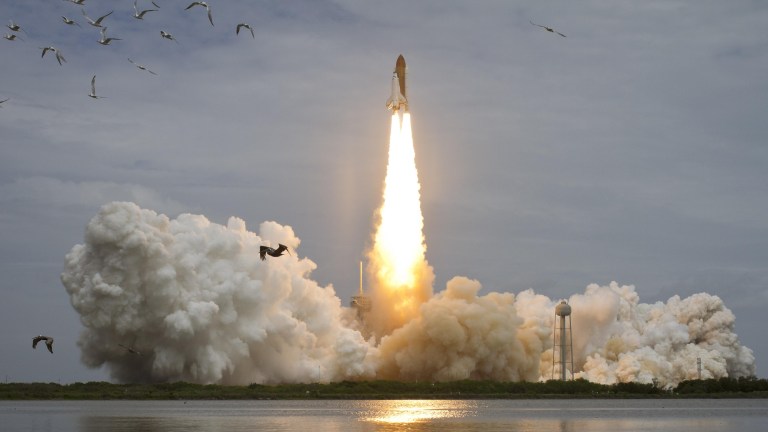When Was the Final NASA Space Shuttle Launch?
NASA and SpaceX's Demo-2 Crew Dragon launch in May will mark the first time the space agency has sent a crewed mission to space in almost a decade.

NASA and SpaceX will make history on May 30 when it launches the Demo-2 Crew Dragon mission, the first crewed American flight to space since the end of NASA’s Space Shuttle Program. This is a major turning point for the American space agency and the next big step in the Commercial Crew Program, the federally-funded initiative that tasked aerospace manufacturers SpaceX and Boeing to develop new spacecraft for NASA. Demo-2, which will mark the first time a private company has flown a crewed mission, will be the biggest test for SpaceX’s Crew Dragon craft. You can watch the liftoff live right here.
The success of the mission, which will see the Crew Dragon launch into Earth’s orbit and dock with the International Space Station, will unlock a new era of American space travel, with the long term goal of sending astronauts back to the Moon and eventually to Mars. But in the short term, the Commercial Crew Program will transport astronauts to and from the International Space Station.
The final launch of the Space Shuttle Program took place on July 8, 2011 at 11:29 am ET. Designated STS-135, the final space shuttle mission saw the Atlantis launch from Launch Pad 39A at the Kennedy Space Center in Florida and dock with the International Space Station. Atlantis returned to Earth on July 21 and the Space Shuttle Program was formally shut down on Aug. 31, 2011.
“With today’s final launch of the space shuttle we turn the page on a remarkable period in America’s history in space, while beginning the next chapter in our nation’s extraordinary story of exploration,” former NASA administrator Charles Bolden said after the launch of STS-135. “Tomorrow’s destinations will inspire new generations of explorers, and the shuttle pioneers have made the next chapter of human spaceflight possible.”
For almost a decade since the end of the Space Shuttle Program, American astronauts have traveled to the International Space Station on Russia’s Soyuz capsule, which costs NASA $80 million per seat, according to The Verge. Per the outlet, NASA paid SpaceX $3.14 billion to design and build the Crew Dragon and $4.8 billion to Boeing to develop the CST-100 Starliner, creating a new kind of American space race.
After six years of work and testing, SpaceX is poised to take a sizable leap ahead in that competition. After an unsuccessful uncrewed flight test in Dec. 2019 that was plagued with several issues that prevented the CST-100 Starliner from docking with the ISS, Boeing will launch a second uncrewed orbital test sometime in October or November 2020 before attempting a crewed flight in 2021.
For now, all eyes are on the Crew Dragon.
“The Demo-2 mission will be the final major step before NASA’s Commercial Crew Program certifies Crew Dragon for operational, long-duration missions to the space station,” NASA said in a mission briefing. “This certification and regular operation of Crew Dragon will enable NASA to continue the important research and technology investigations taking place onboard the station, which benefits people on Earth and lays the groundwork for future exploration of the Moon and Mars starting with the agency’s Artemis program, which will land the first woman and the next man on the lunar surface in 2024.”
Almost a decade after the end of the Space Shuttle Program, the American dream of space is very much alive.
